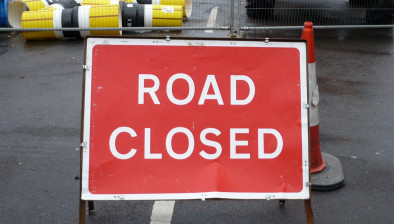Tunnelling under railway underway as Scottish Water progresses £120m water supply investment
https://www.youtube.com/watch?v=4VrqYUNLXYQ
Scottish Water has tunnelled under a railway line near Kilmarnock as a project to install a major new water main and improve services to more than 200,000 people progresses.
Caledonia Water Alliance (CWA), Scottish Water’s alliance partner, used a state-of-the-art Tunnel Boring Machine (TBM) to install a 132-metre-long 1500mm diameter concrete tunnel beneath the Kilmarnock to Dumfries railway line near Whinpark Farm just off the B7082.
The work, which started on April 30 was completed without causing any disruption to rail services and ahead of schedule.
A total of 53 concrete rings, each 2.5 metres long and weighing 4.9 tonnes, were installed to form the tunnel to house the last section or “missing link” of a 13-mile-long stretch of water main from the Amlaird Water Treatment Works in the Fenwick/Waterside areas to Highlees district service reservoir near Dundonald in East Ayrshire.
Before the tunnelling started, two shafts were sunk on either side of the railway. Due to the difference in height elevation between the two sides, the depth of the shafts were sunk to 16 metres on one side and 3.5 metres on the other side.
The excavation of the shafts during preparatory work for the tunnel displaced some 2500 tonnes of earth during their construction. During the tunnel drive, a further 1260 tonnes of earth was displaced, meaning the total amount of earth moved was more than 3700 tonnes.
 The tunnel was installed using a 9-metre-long hydraulically-operated tunnel boring machine (TBM), which comprised three 3-metre-long shields or cans, working at a speed of between four metres and nine metres per day, excavating the earth before installing the concrete rings.
The tunnel was installed using a 9-metre-long hydraulically-operated tunnel boring machine (TBM), which comprised three 3-metre-long shields or cans, working at a speed of between four metres and nine metres per day, excavating the earth before installing the concrete rings.
Between four to eight engineers worked on the tunnelling at any one time. Apart from excavating the earth and installing the tunnel and water main, their work included monitoring the tunnel from ground level for subsidence using laser technology.
 Sean Lavin, senior construction manager, said: “We are continuing to make good progress with the project and this latest piece of work to install the tunnel was a very important part of that.
Sean Lavin, senior construction manager, said: “We are continuing to make good progress with the project and this latest piece of work to install the tunnel was a very important part of that.
“We are delighted to have completed the work under the railway, which involved a lot of careful planning and close liaison with Network Rail and Scottish Water Special Services, who deal with land, environmental and planning issues.
“We carried out detailed site investigation work, including the drilling of vertical boreholes to analyse the geology before the tunnelling started, and some intricate work using hi-tech equipment to construct the tunnel and install this stretch of the new water main.”
 The tunnel was installed as Scottish Water progresses with the second phase of a £120 million investment in the drinking water network which will benefit more than 200,000 people and businesses in much of Ayrshire and parts of East Renfrewshire.
The tunnel was installed as Scottish Water progresses with the second phase of a £120 million investment in the drinking water network which will benefit more than 200,000 people and businesses in much of Ayrshire and parts of East Renfrewshire.
This section of water main follows a route from the east of Fenwick, skirting the east of Kilmarnock and running west across farmland to Highlees.
Another 13 mile-long stretch of water main, from near Newton Mearns, East Renfrewshire to the Fenwick/Waterside area in East Ayrshire, and a pumping station at Darnley, has already been constructed as part of the overall project.
 Scottish Water announced in December 2015 that it will improve the water supply network by installing more than 30 miles of new water mains to connect the system in Ayrshire with the Greater Glasgow area’s network.
Scottish Water announced in December 2015 that it will improve the water supply network by installing more than 30 miles of new water mains to connect the system in Ayrshire with the Greater Glasgow area’s network.
The new and expanded network will enable Scottish Water to provide customers with greater security of supply and to respond more effectively to operational issues such as burst water mains and minimise disruption to customers.
 The construction of the new strategic water main, which is expected to be completed in 2020, will connect the Bradan water supply network to the network served by the Milngavie and Balmore water treatment works, north of Glasgow.
The construction of the new strategic water main, which is expected to be completed in 2020, will connect the Bradan water supply network to the network served by the Milngavie and Balmore water treatment works, north of Glasgow.
When complete, the investment will enable Scottish Water to transfer water from Glasgow to Ayrshire, and vice-versa, if required.
This will create a larger, more robust and connected supply zone which will benefit customers in areas such as Ayr, Prestwick, Kilmarnock, Troon, Irvine, Fenwick, Galston, Stewarton, Hurlford, Maybole, Eaglesham and Newton Mearns.





















